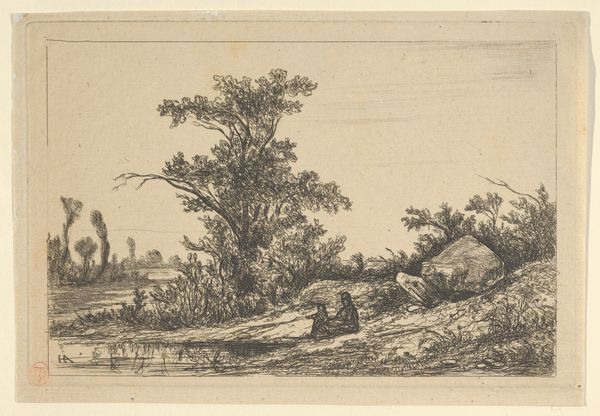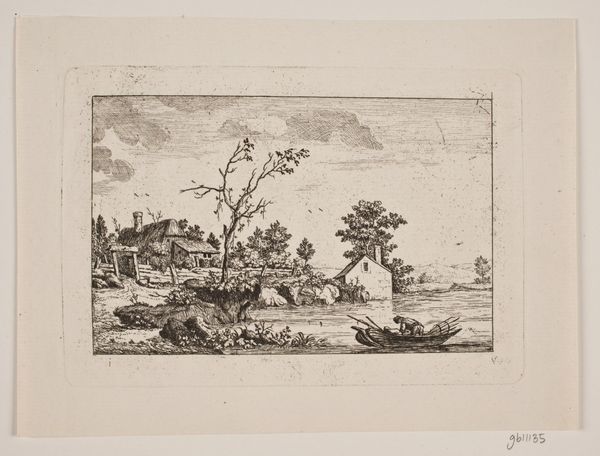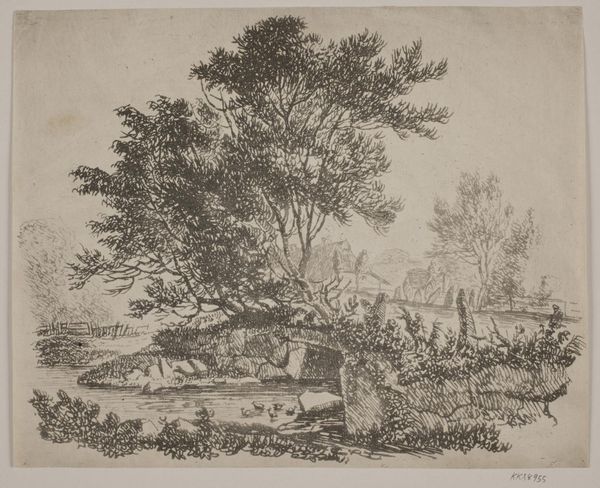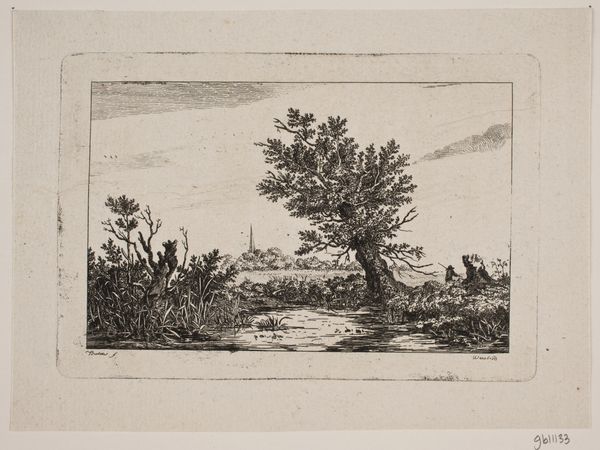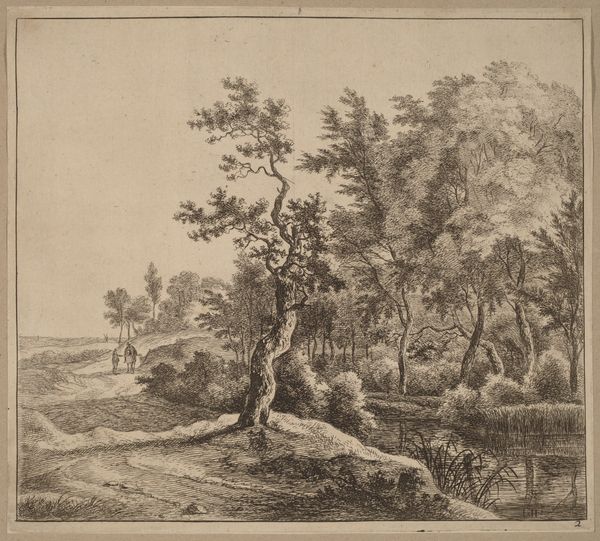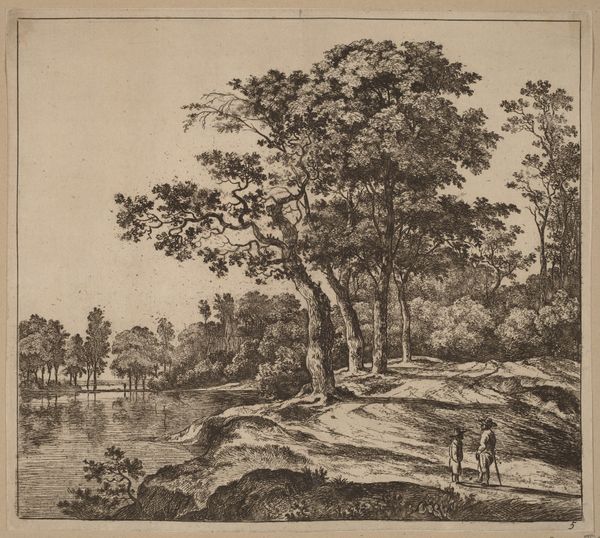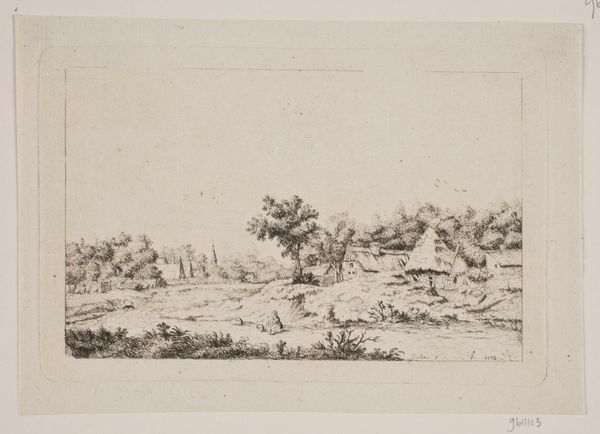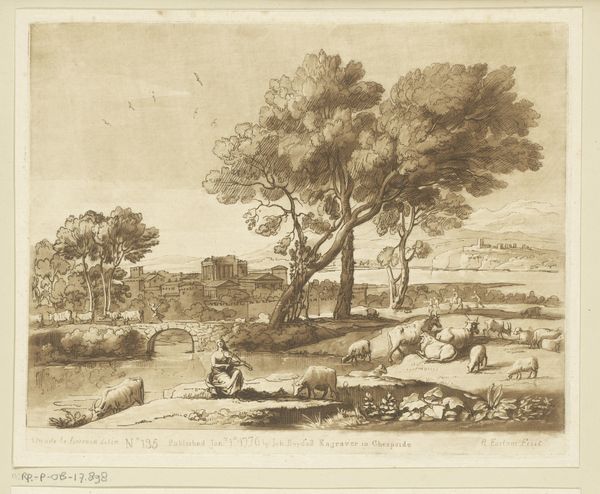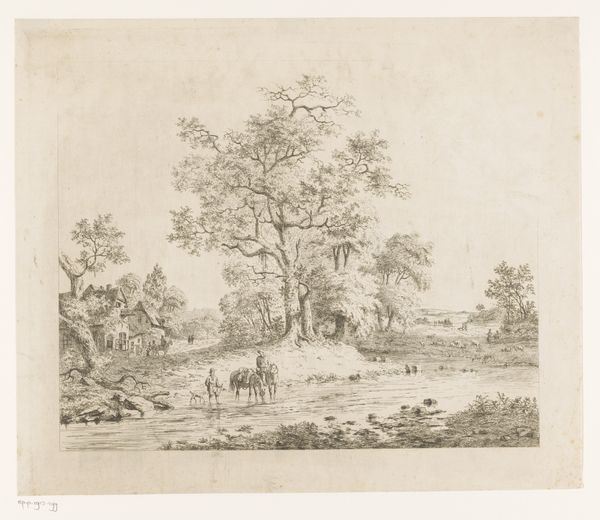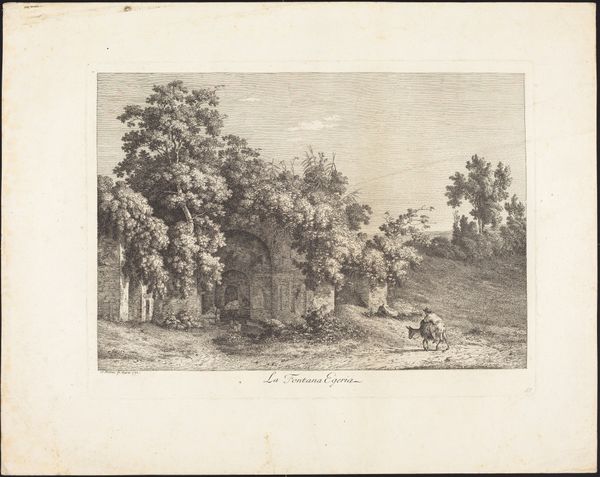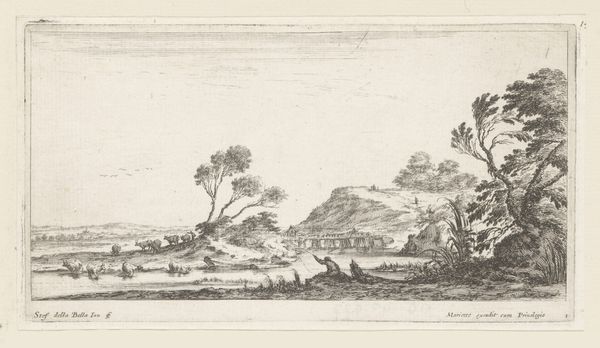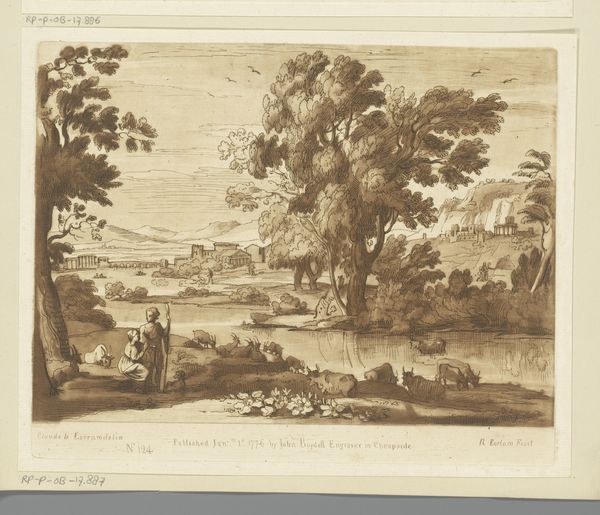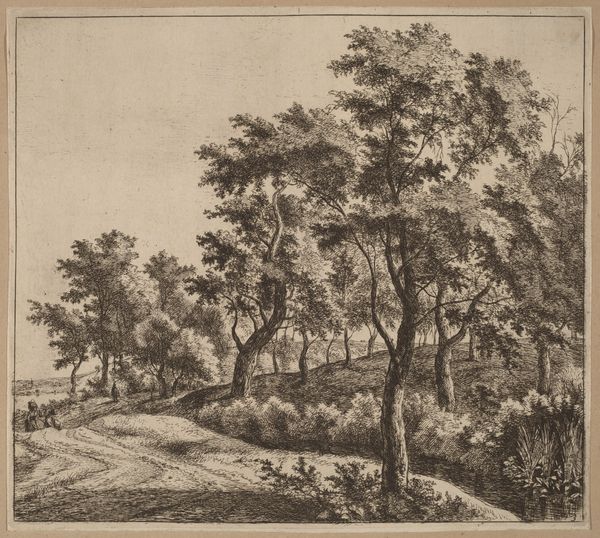
print, etching, engraving
# print
#
etching
#
landscape
#
romanticism
#
engraving
Dimensions: 135 mm (height) x 191 mm (width) (plademaal)
Curator: Welcome. Here we have “Landskaber,” created between 1751 and 1828 by Johan Bülow. It’s a striking landscape rendered through etching and engraving, currently held here at the SMK. Editor: My initial response is a sort of serene melancholy. The muted tones create an atmosphere of quiet reflection, yet the visible detail suggests a bustling scene with human figures populating the vista. Curator: Exactly! Let's examine the compositional structure. The artist uses horizontal lines to establish spatial depth, drawing the eye from the foreground elements toward the more distant horizon. Notice how the strong diagonal of the main tree pulls the viewer further into the scenery? Editor: That visual pull is intriguing because it reinforces Romantic notions of nature's dominance. But consider how Bülow places figures into that landscape – travelers on a path, a person on a bridge. It makes you think about how these ordinary people are shaped by broader environmental forces and limited resources. Where does class intersect in this landscape? Who has the privilege to simply travel through it leisurely, and who is burdened by it? Curator: A fascinating consideration. We can observe how the etching technique allows for a nuanced rendering of light and shadow, further accentuating depth and modeling of forms. The precise line work around the buildings and figures contributes a distinct sense of volume within the scene. Editor: It would be insightful to see how Romantic notions were expressed differently, particularly with regards to the exploitation of land and labour during this period. What were the socio-political forces defining Bülow's context, and how are they coded, or perhaps effaced, within this seemingly neutral landscape? Curator: Absolutely, that invites contemplation about whose stories aren't being told, even within a "landscape". The technical aspects give way to larger meanings about representation and ideology. Editor: Indeed. It encourages a deeper, critical look at seemingly serene pastoral scenes, understanding that beauty often obscures systemic imbalances and histories of struggle. Curator: A fitting perspective to keep in mind as we engage with other landscapes within our collection as well. Editor: Exactly. It reminds us to continuously engage with and ask important questions about the history and politics behind aesthetics.
Comments
No comments
Be the first to comment and join the conversation on the ultimate creative platform.
